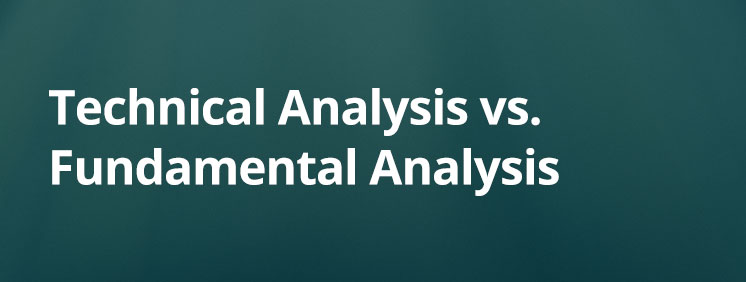
Do you trade in shares? If yes, you may be wondering how you can value your portfolio or potential investment. Note that there are two basic techniques that experts use to calculate the fair value or intrinsic value of a stock. These two ways are known as fundamental analysis and technical analysis. Did you know that the debate regarding the merits and drawbacks of fundamental vs. technical analysis can be controversial?
Also, it is worth noting that investors and traders usually miss out when they choose one approach over the other. However, in reality, a majority of investors use a mix of the two kinds of analysis to get the best results. This is why combining both these methods of stock analysis often proves to be an efficient and effective route for most investors.
What Is Technical Analysis?
We can define technical analysis as a method that forecasts the stock price based on demand and supply forces in the marketplace. It is worth noting that most technical analysts strongly believe that stock price reflects all information, which makes fundamental analysis unnecessary. Note that information from this analysis of price is used for predicting what the future price of the share will be.
Did you know that early signs of technical analysis appeared long ago in Dutch financial markets in the seventeenth century? You should know that math and patterns usually drive technical analysis. Analysts forecast future stock market prices using various past share performance statistics. When evaluating share price, technicians usually use overall trend, areas of resistance and support on the charts, and price momentum.
Technical analysts also use the following factors to identify stock trades that will help make a profit:
- Historical returns
- Volume and price behavior
- Resistance and support levels
Investors and analysts using technical analysis are sure that they can determine future performance by reviewing and analyzing various patterns and trends from performance data.
What is Fundamental Analysis?
In contrast, the fundamental analysis considers the financial health of the company or business you’re thinking about investing in to figure out its intrinsic stock value. Note that you can use both historical as well as present data, and the goal is to forecast how the stock will do in the future.
Did you know that a detailed analysis and model is required for creating a complete and thorough fundamental picture of the market? Key ratios for this analysis include dividend yield, price/earnings ratio (P/E), dividend payout ratio, and return on equity, etc.
You can easily measure the value of the stock by looking at some of the basic economic factors and variables that affect its value. Factors that experts consider in the fundamental analysis are:
- Income, revenue, and expenses
- Company growth and expansion prospects
- Industry market return (expected) on assets or equity
Differences between Technical and Fundamental Analysis
These are some of the primary differences between technical analysis and fundamental analysis:
Methodology
Fundamental analysis is the examination of industry trends, financial records, and economic outlook. On the other hand, the technical analysis examines price movements and market psychology.
Type of Trading
Note that long-term traders and investors use fundamental analysis. In contrast, swing traders and short term traders use technical analysis.
Function
It is worth noting that the main function of fundamental analysis is to make an excellent investment, whereas technical analysis is often used for trading purposes.
Pros of Fundamental Analysis
- Note that by performing deep fundamental analysis, investors can discover certain things and aspects that the market does not notice. And this will help you find suitable trade opportunities in the market.
- If you would like to hold stock in the long run, knowing that the stock is fundamentally sound will make you more assured and confident in holding it. This is especially true if the stock price moves up and down.
Pros of Technical Analysis
- You can quickly analyze charts. This can help you find and plan stock trades quickly.
- Note that technical analysis helps you find valuable insights regarding where to enter and exit a trade and where to place a stop loss.
- Also, with technical analysis, you will be able to see the same chart as all other traders or investors. As a result, a lack of information does not handicap you.
Related Course: Trading – Fundamentals of Technical Analysis
Learn how to apply technical analysis as a standalone trading methodology or as a supplement to fundamental analysis using tools that have been quantitatively tested – global scope with applications to equities, fixed income, commodities and foreign exchange markets.
About The New York Institute of Finance
The New York Institute of Finance (NYIF) is a global leader in professional training for financial services and related industries. NYIF courses cover everything from investment banking, asset pricing, insurance and market structure to financial modeling, treasury operations, and accounting. The New York Institute of Finance has a faculty of industry leaders and offers a range of program delivery options, including self-study, online courses, and in-person classes. Founded by the New York Stock Exchange in 1922, NYIF has trained over 250,000 professionals online and in-class, in over 120 countries.
See all of NYIF’s training and qualifications here.





